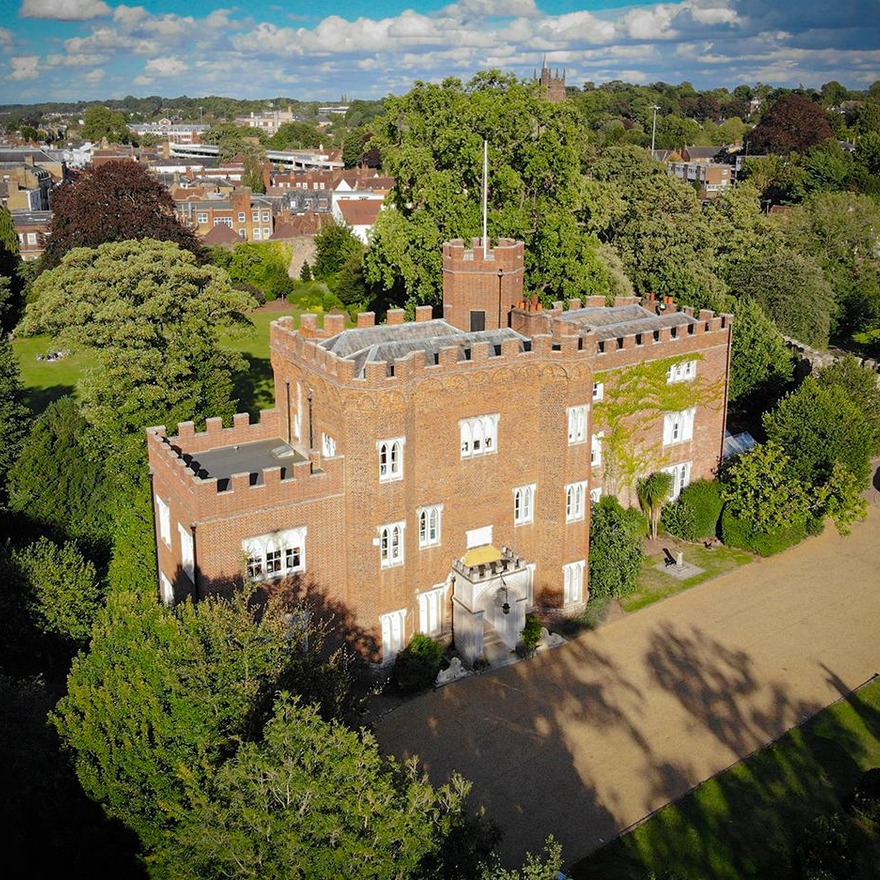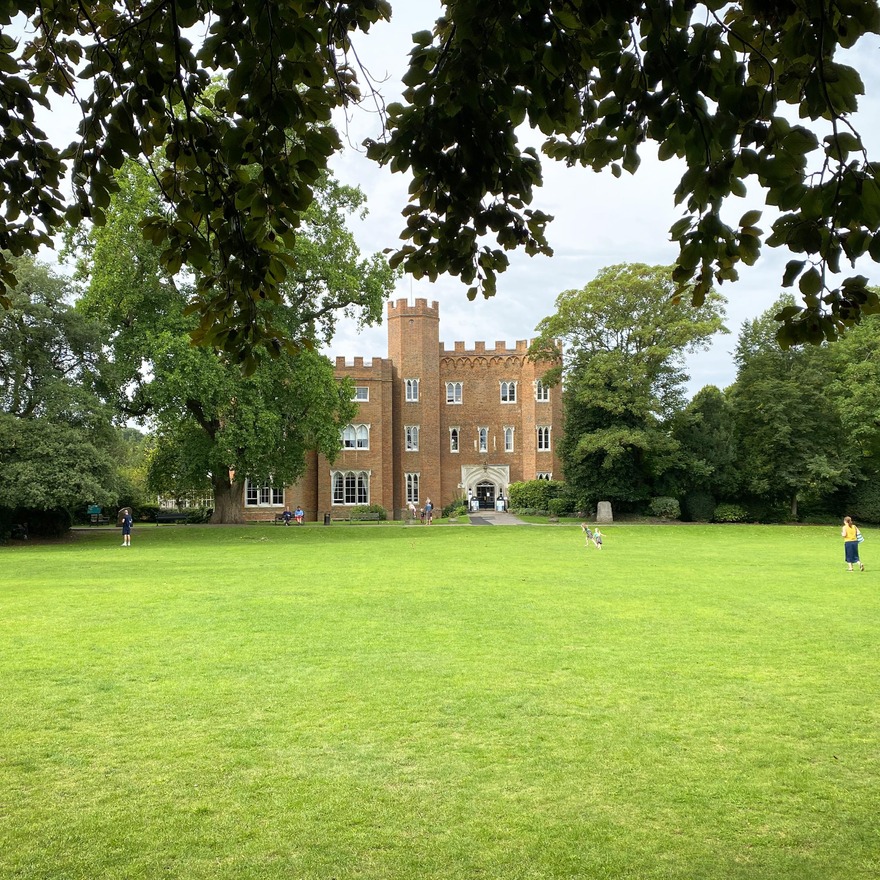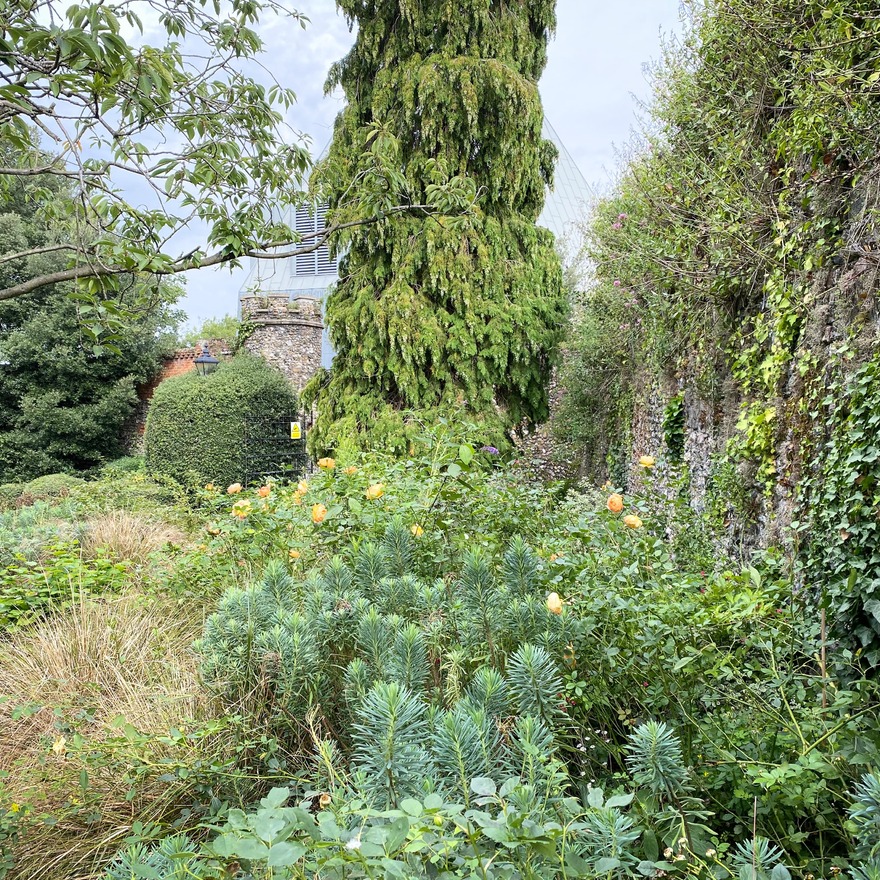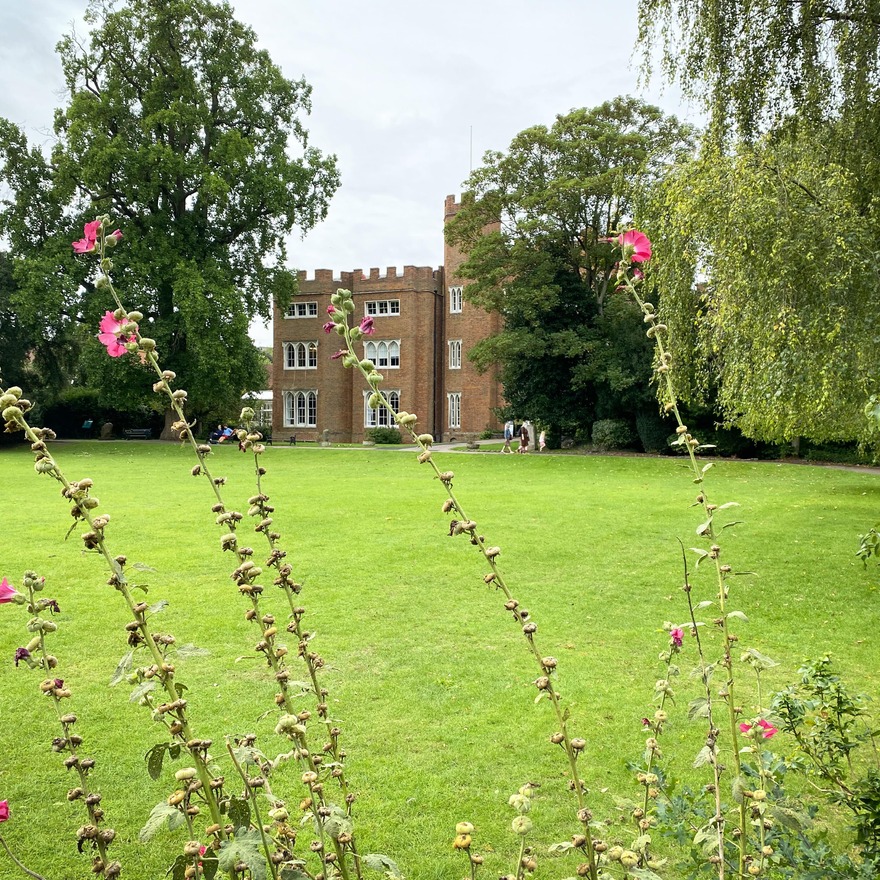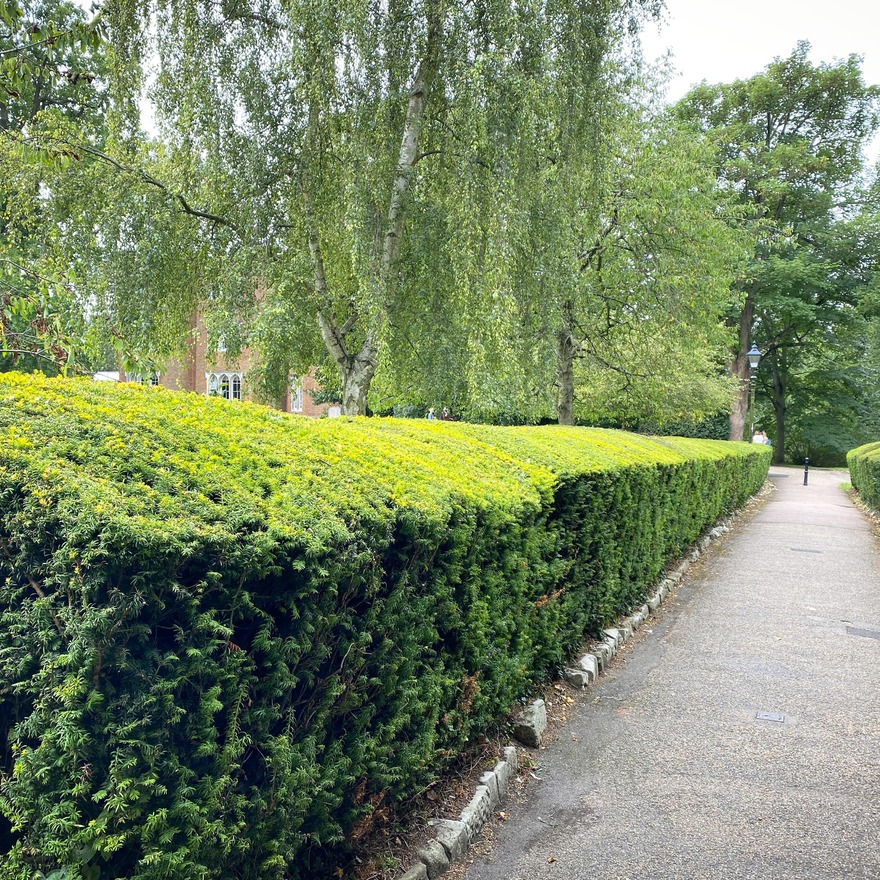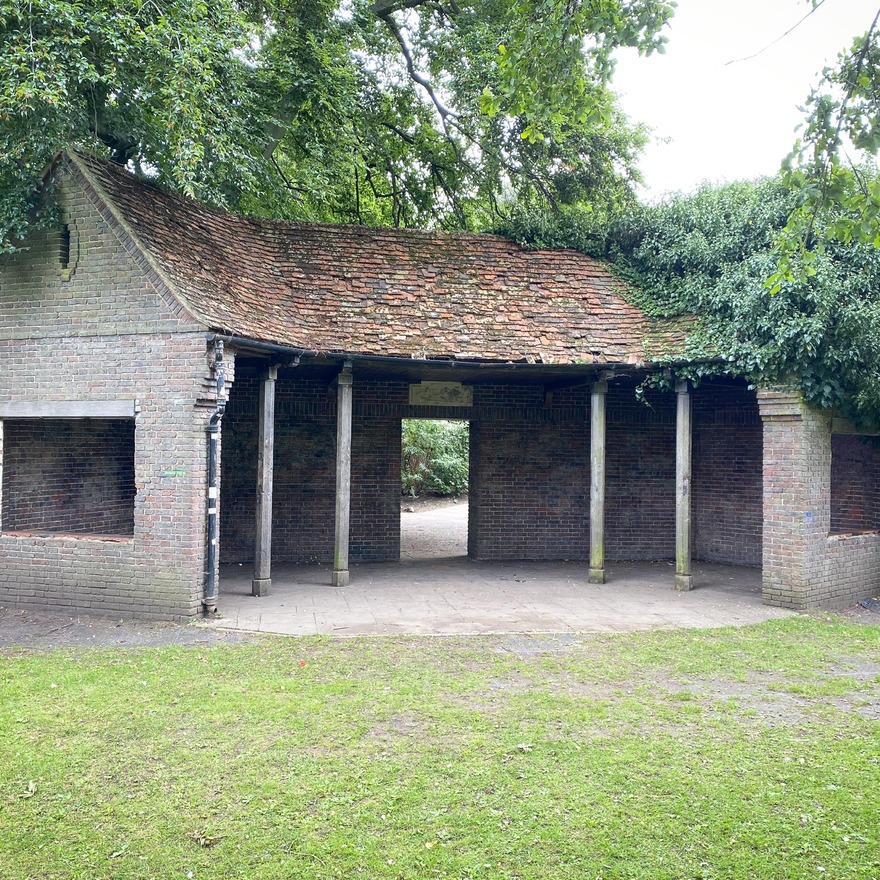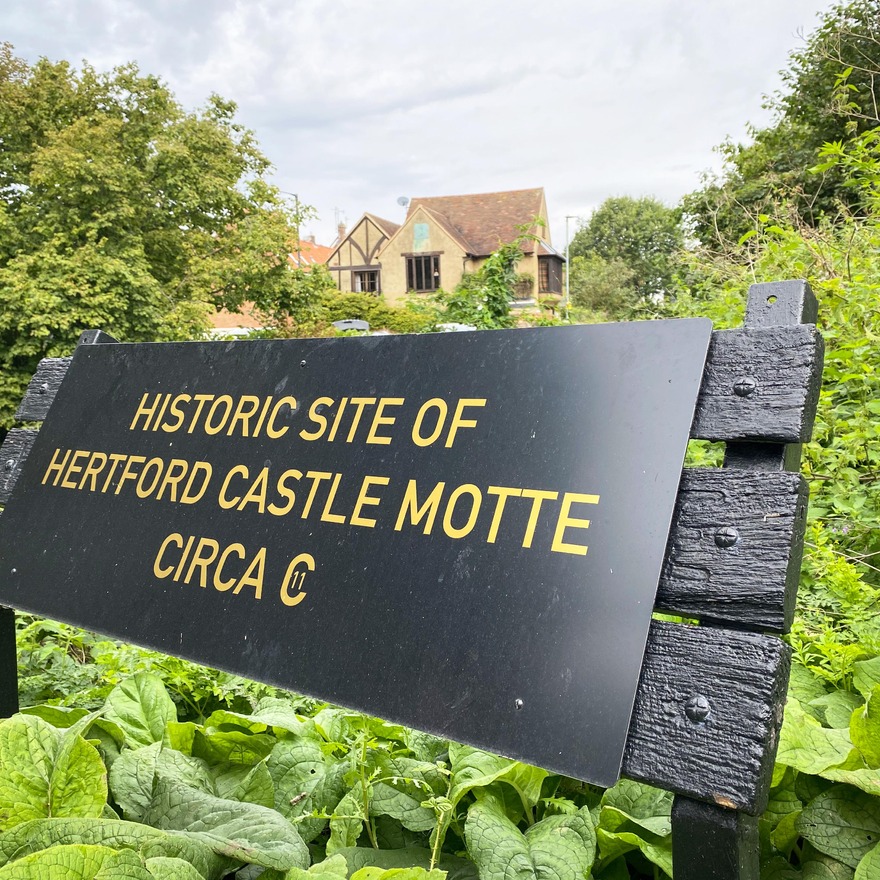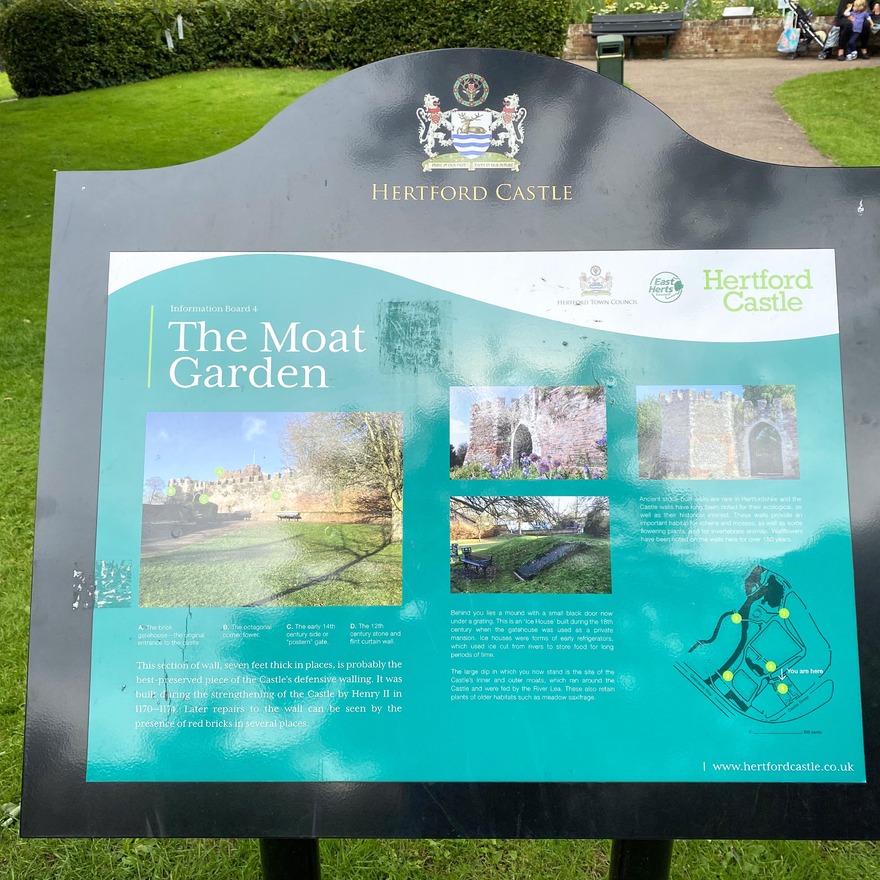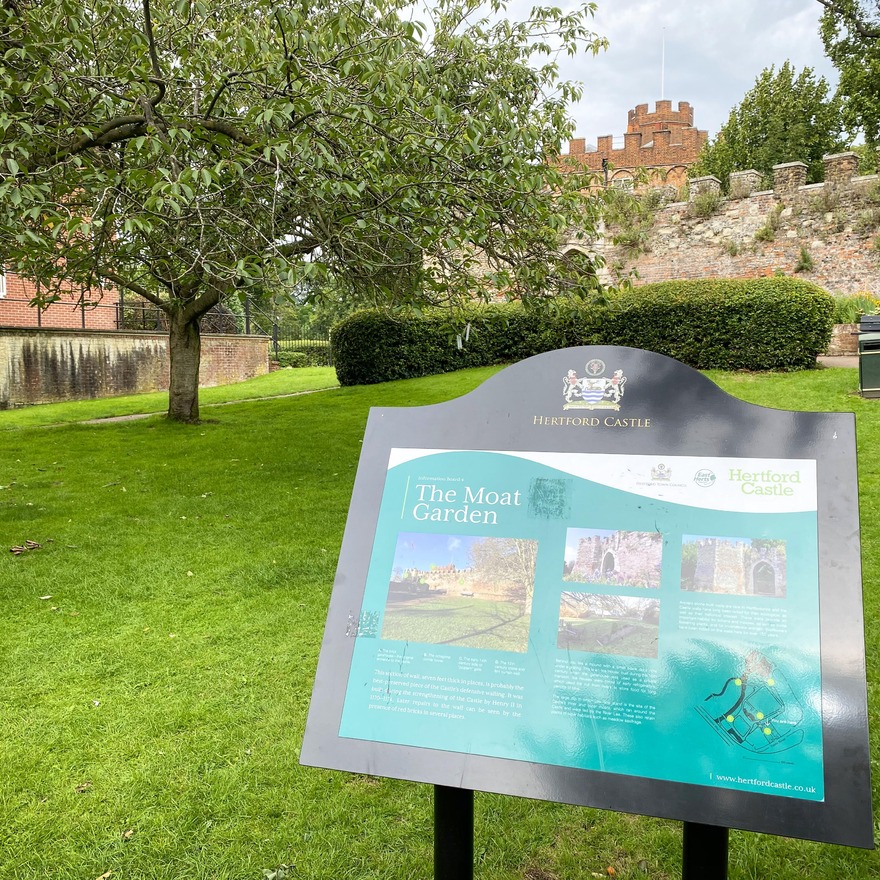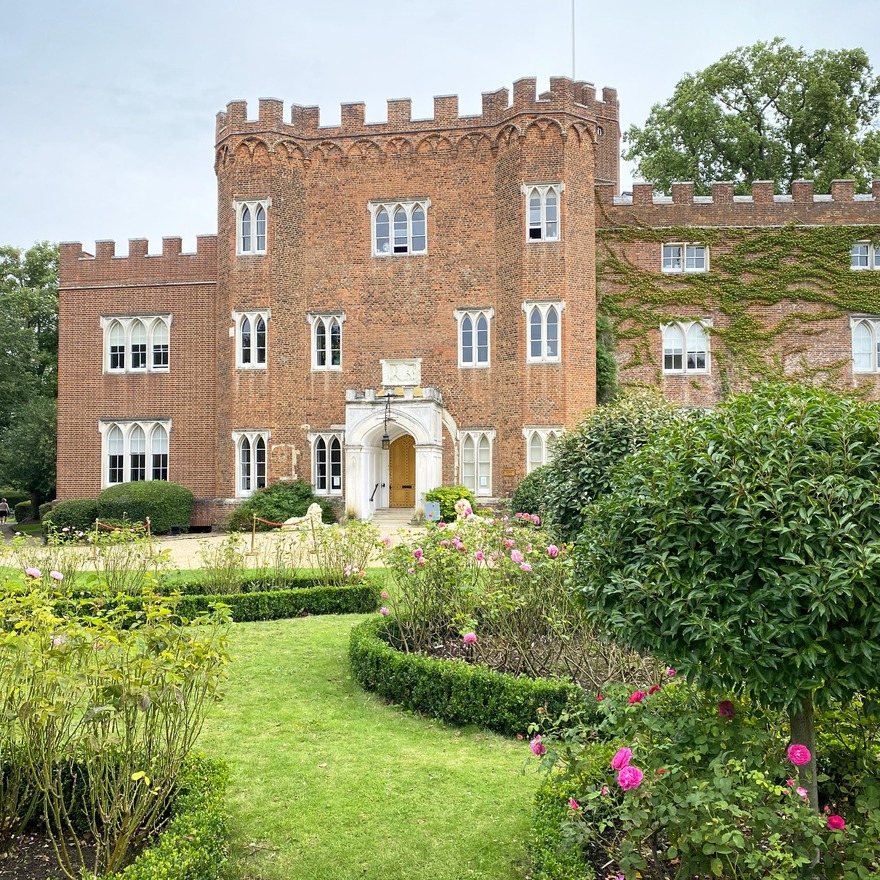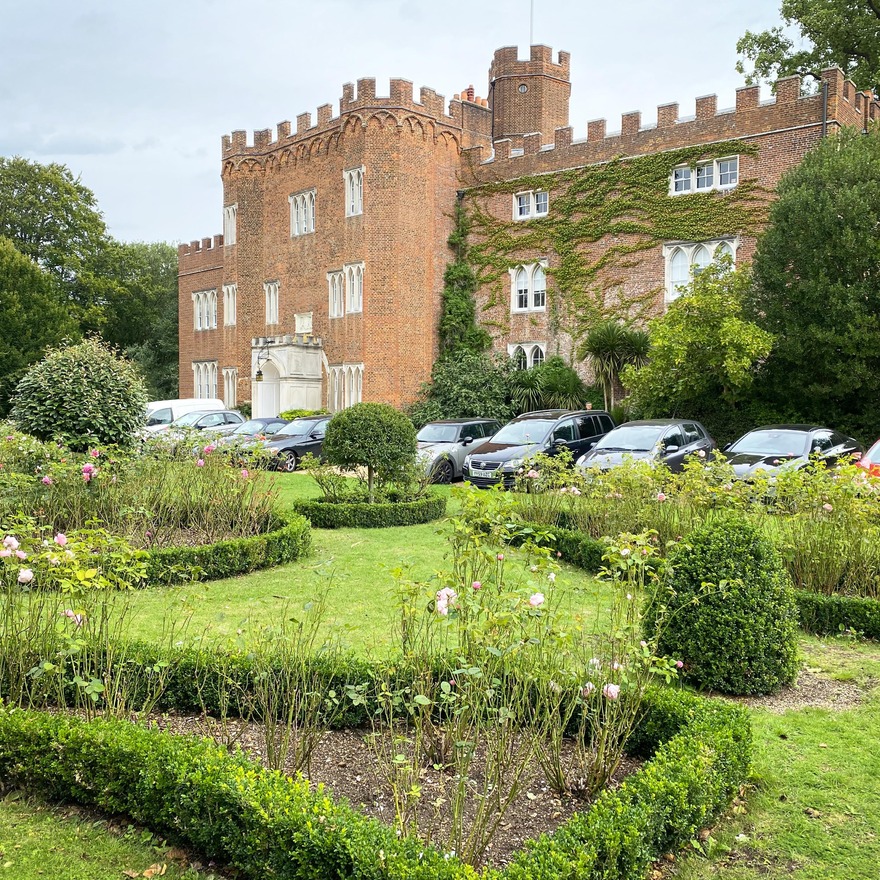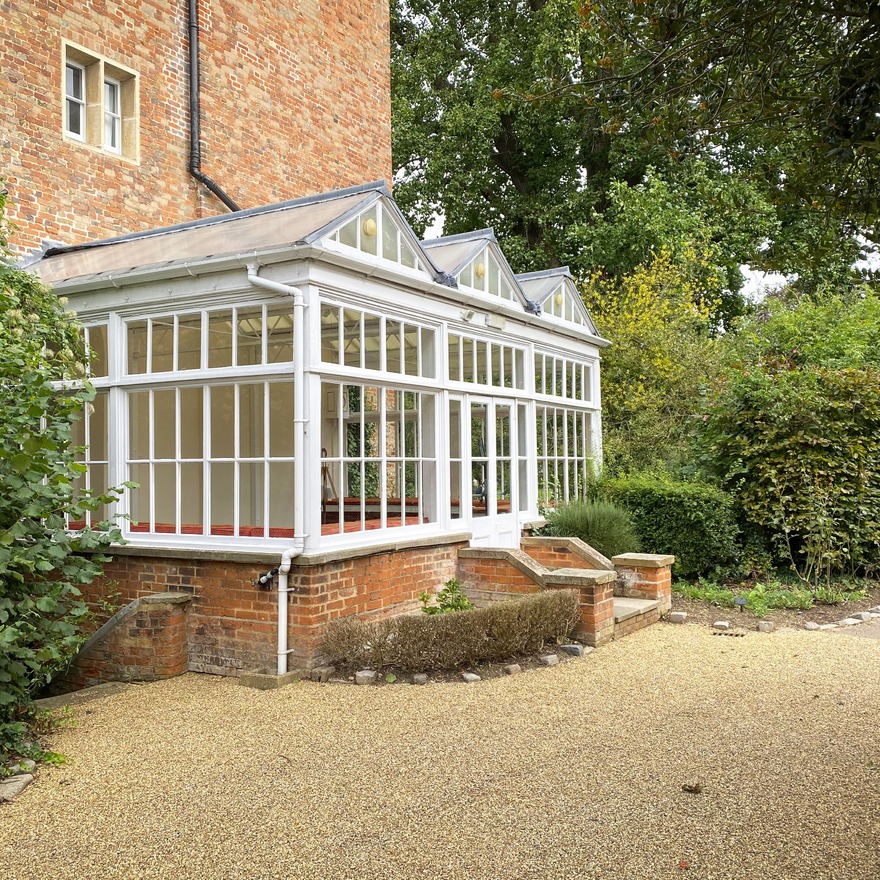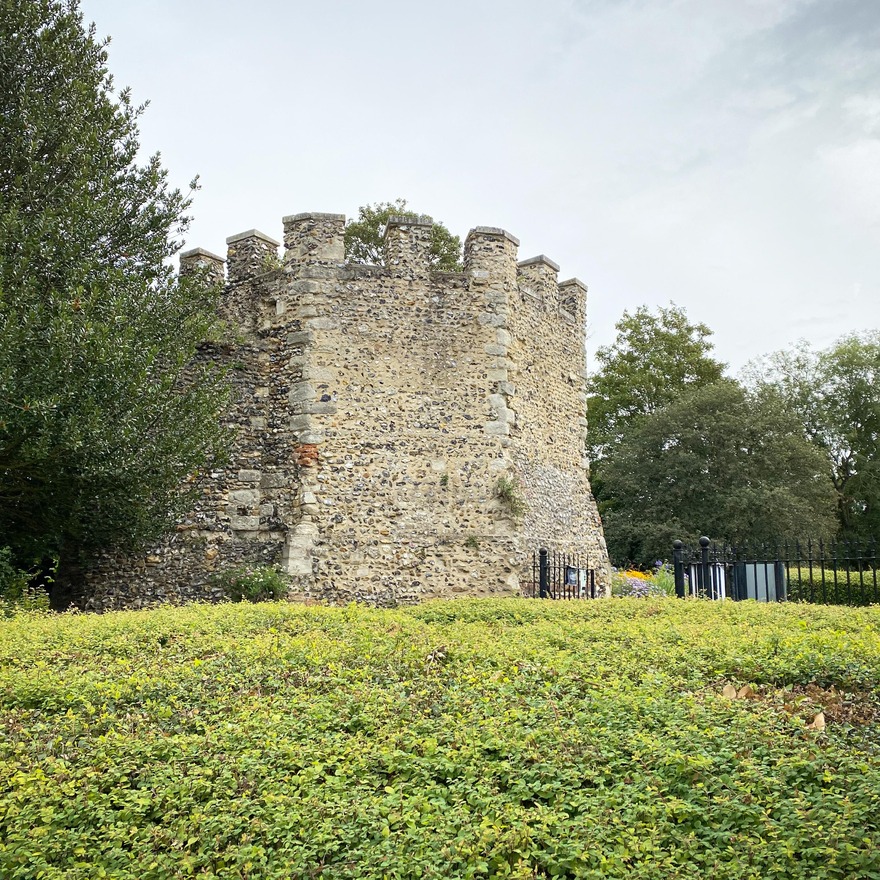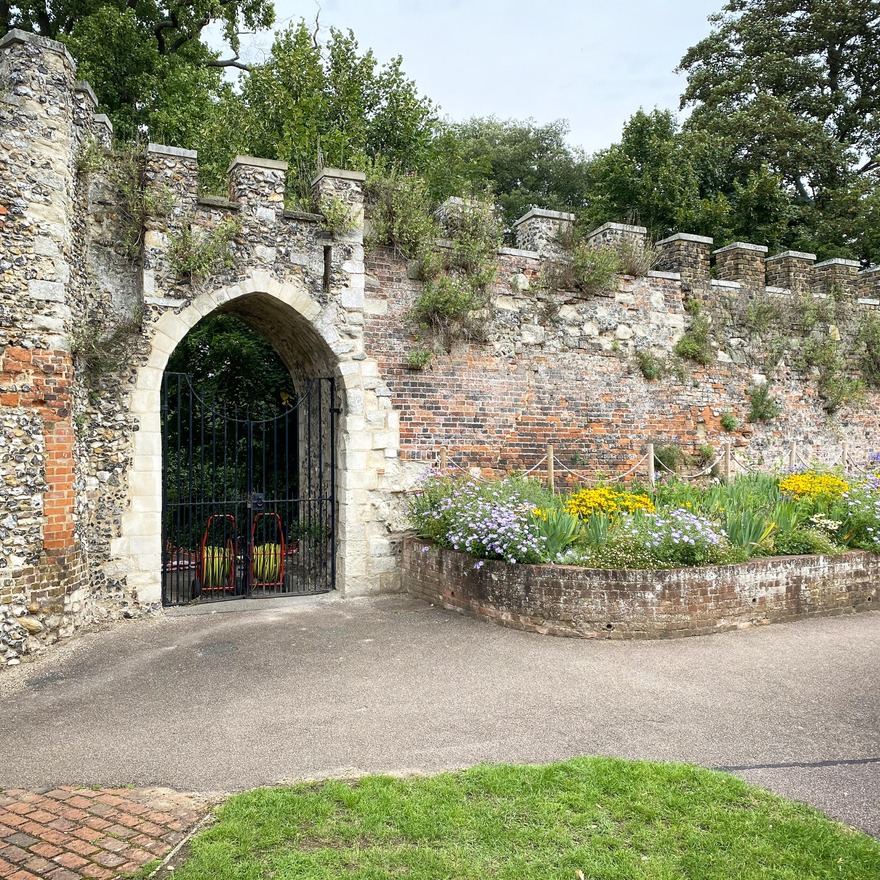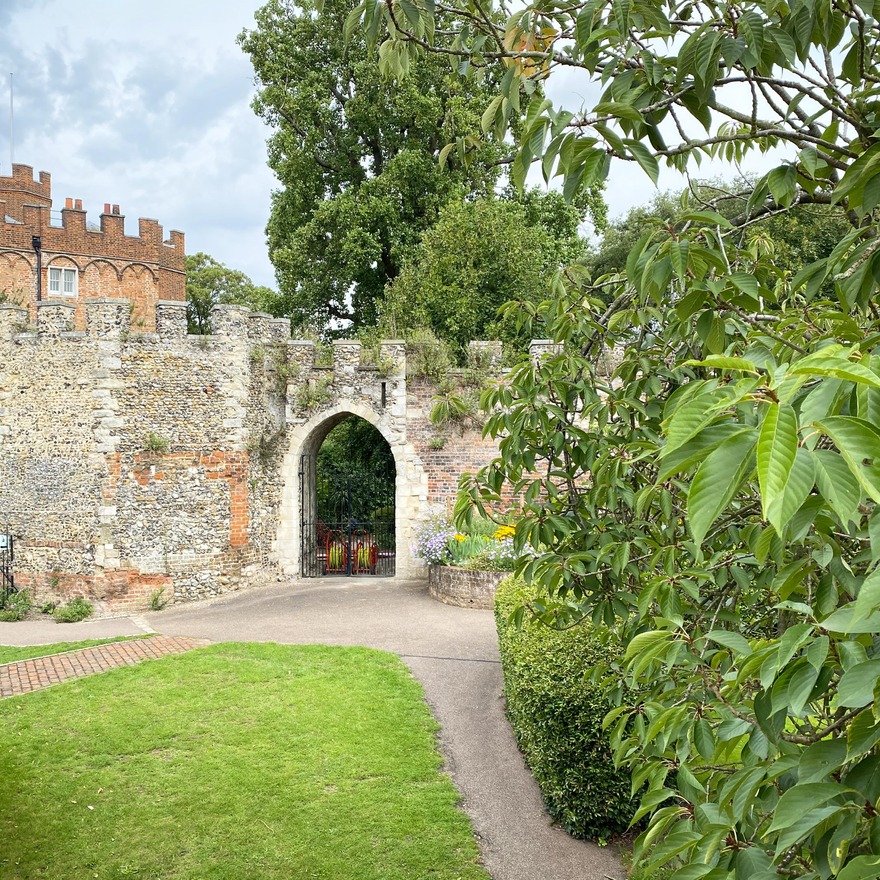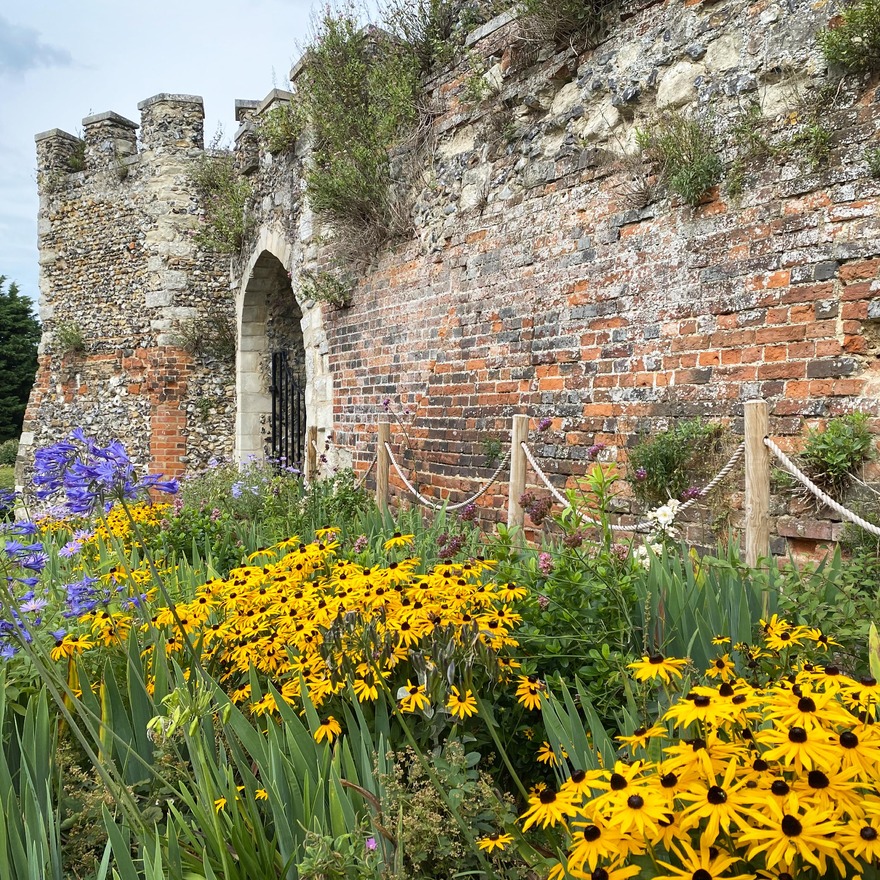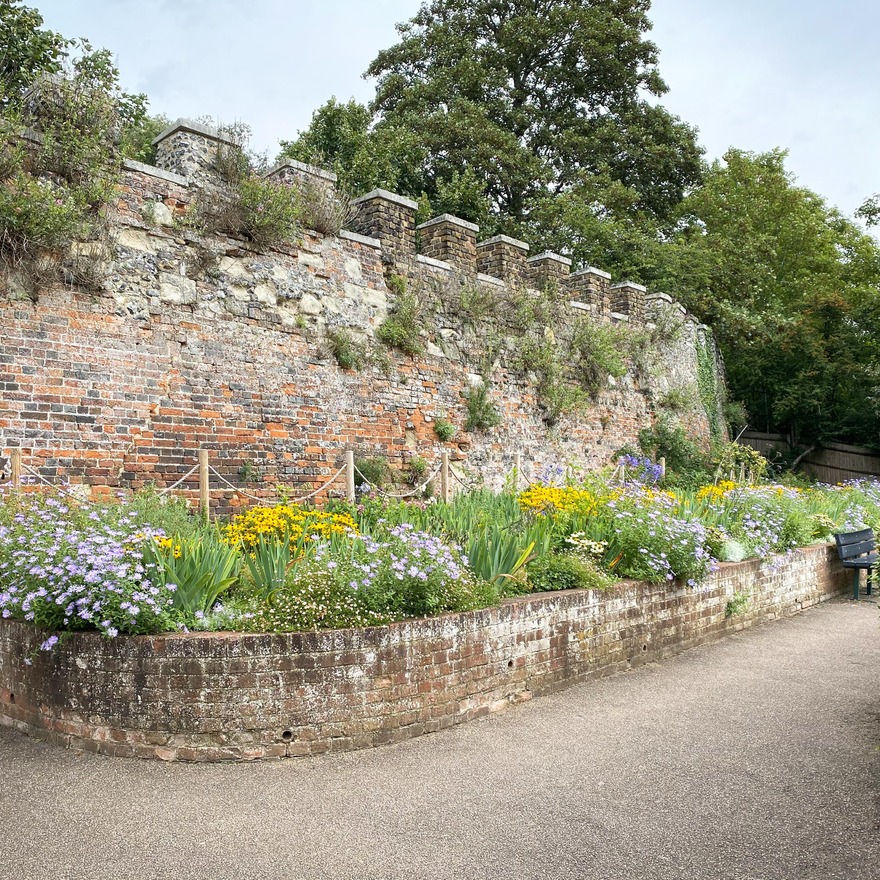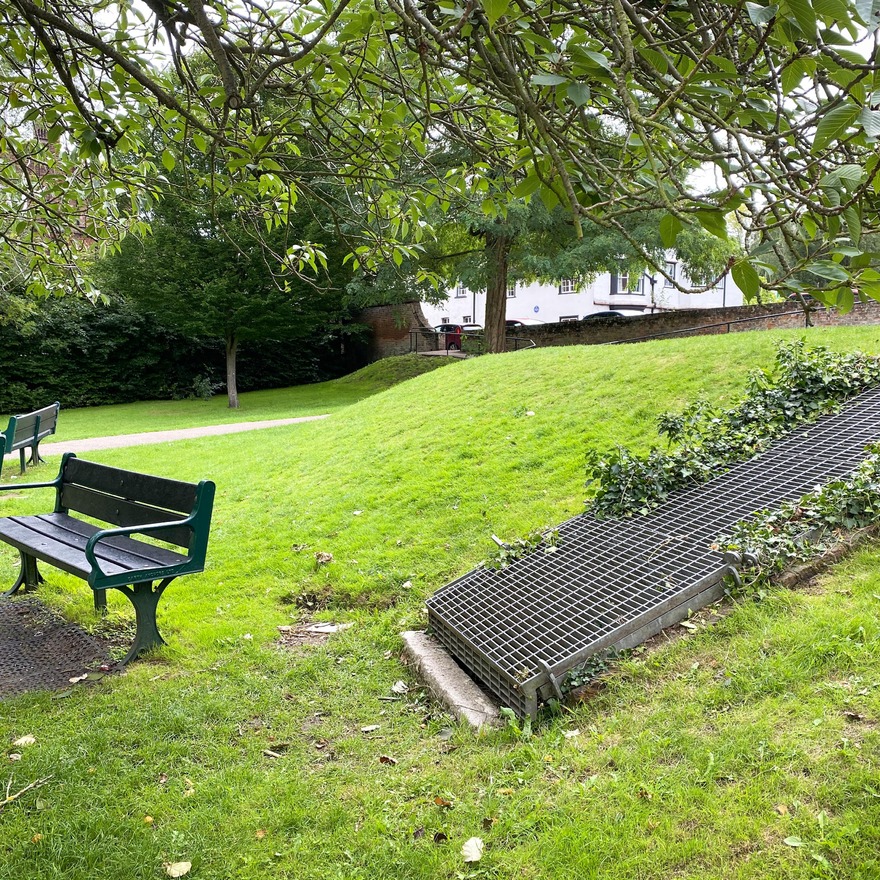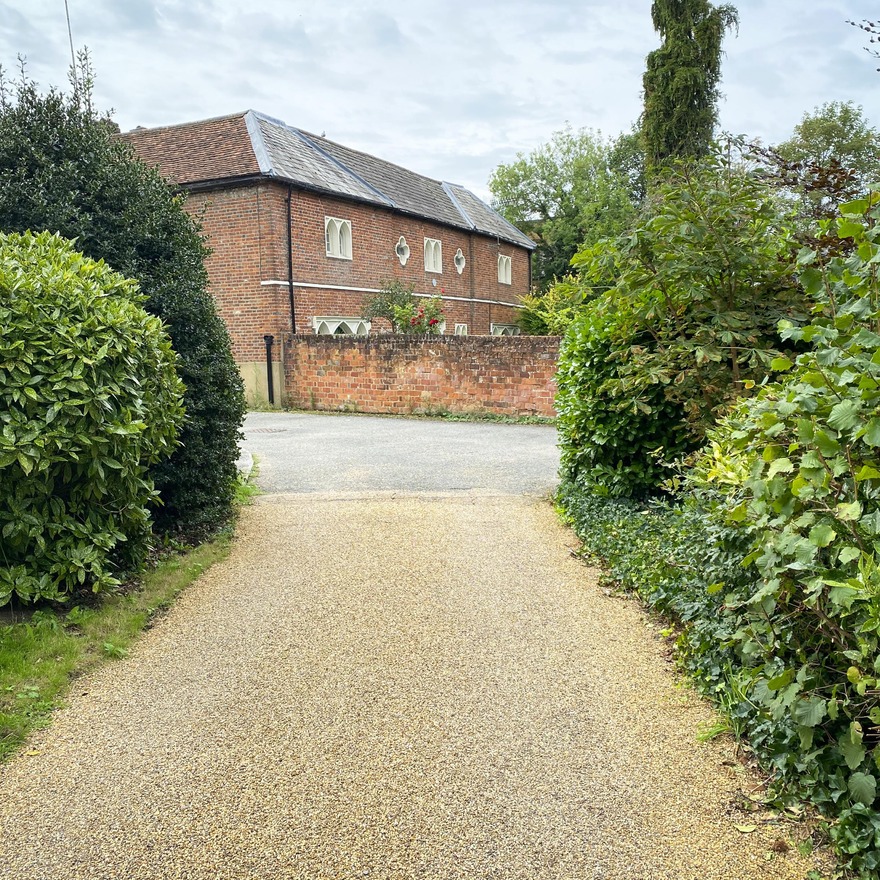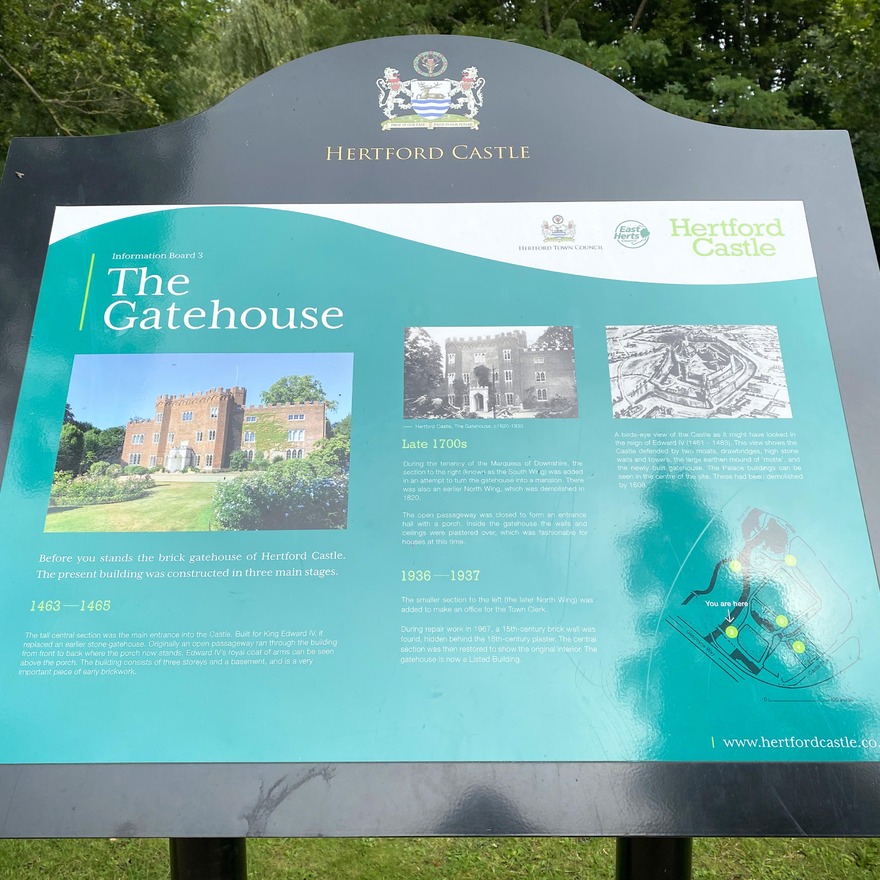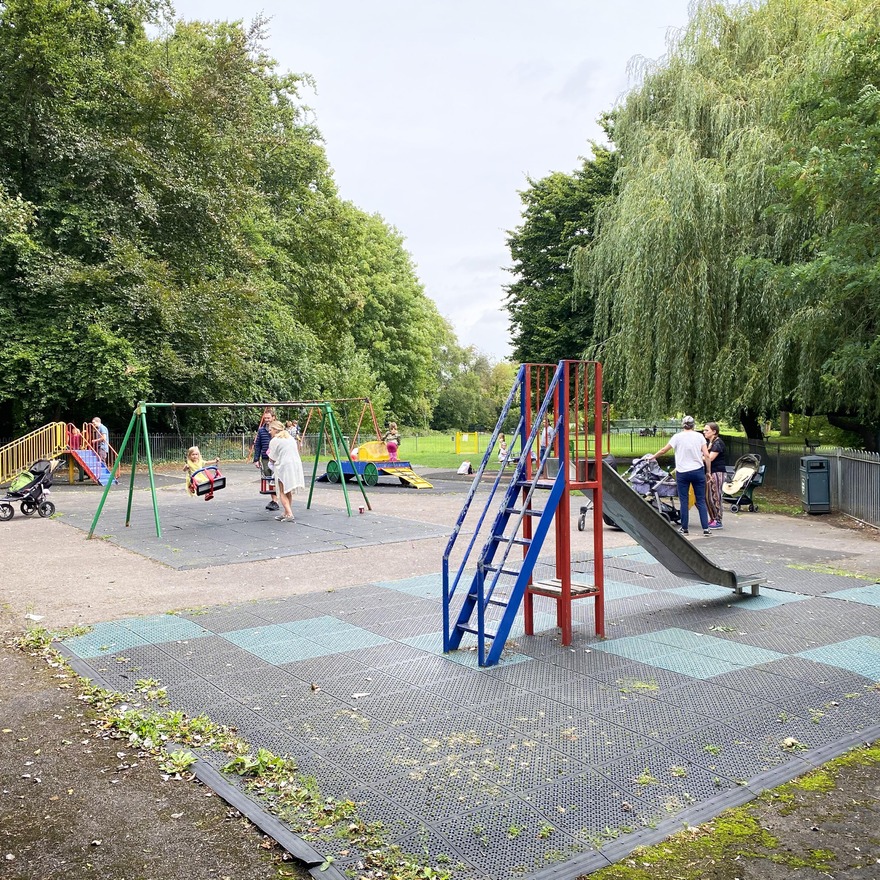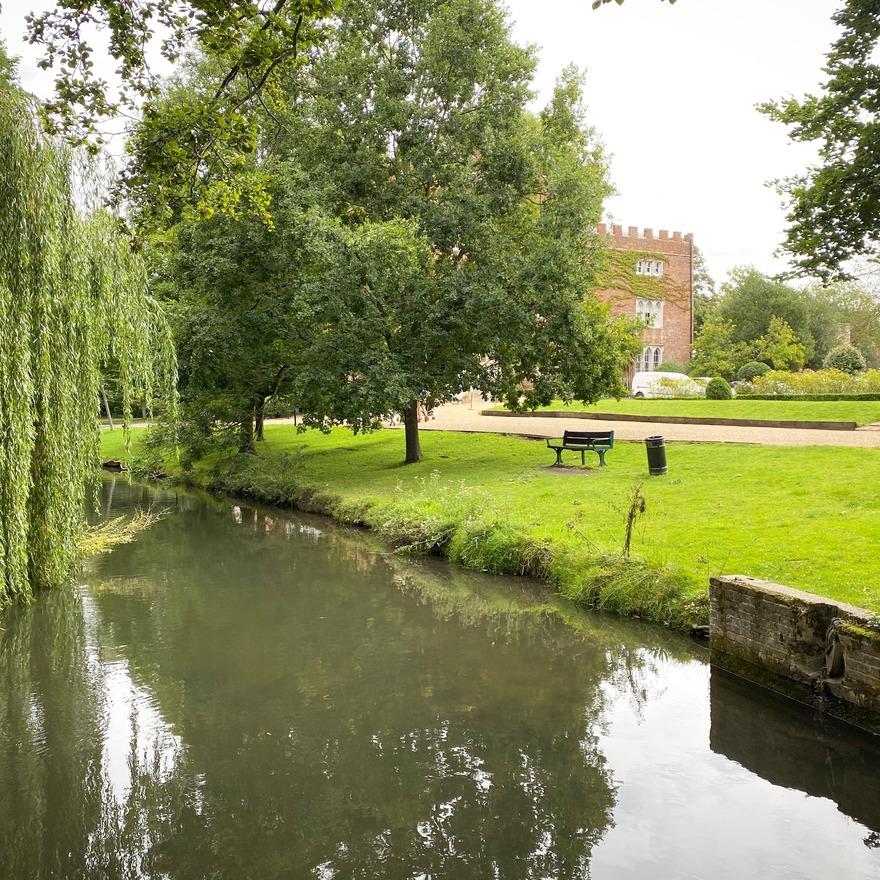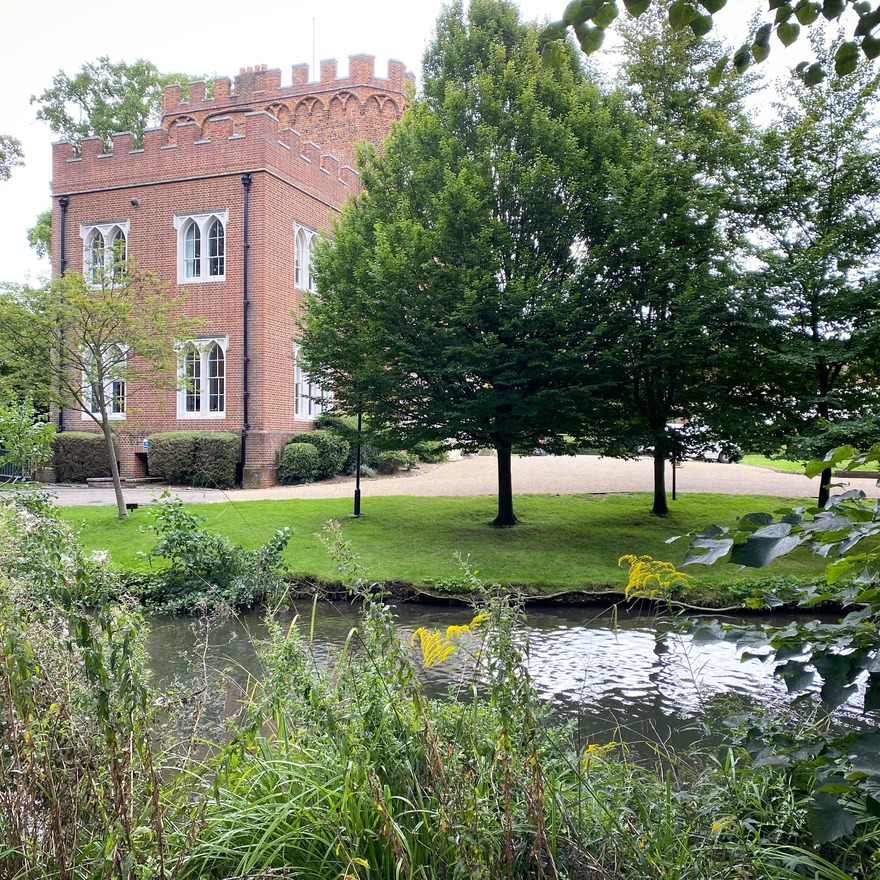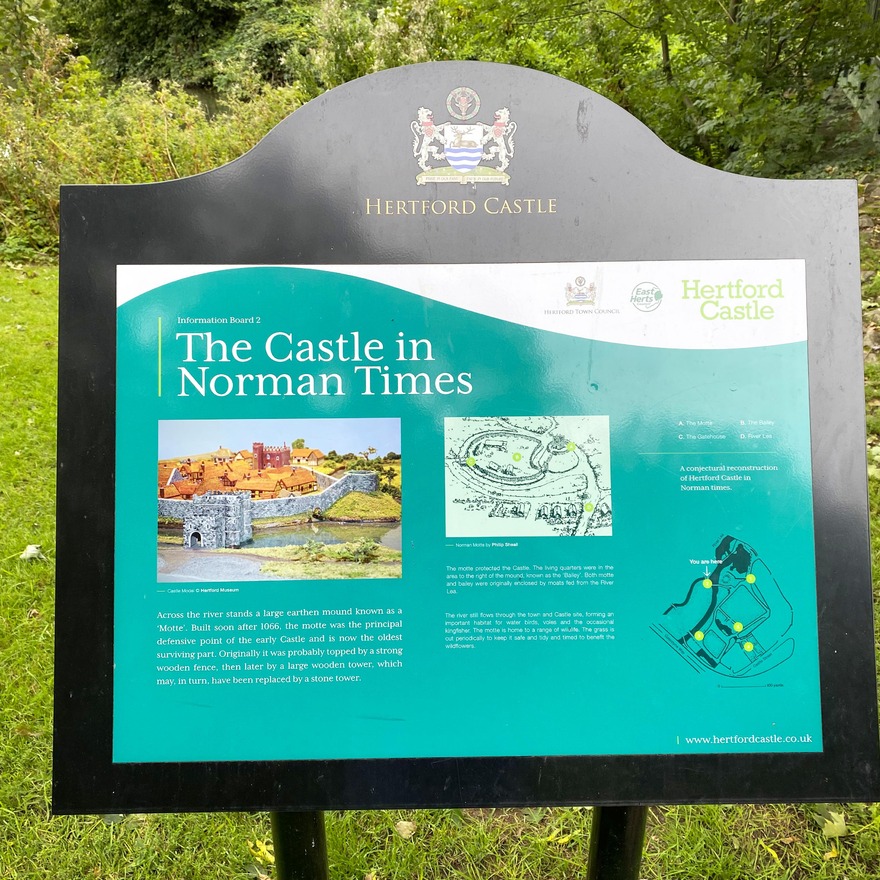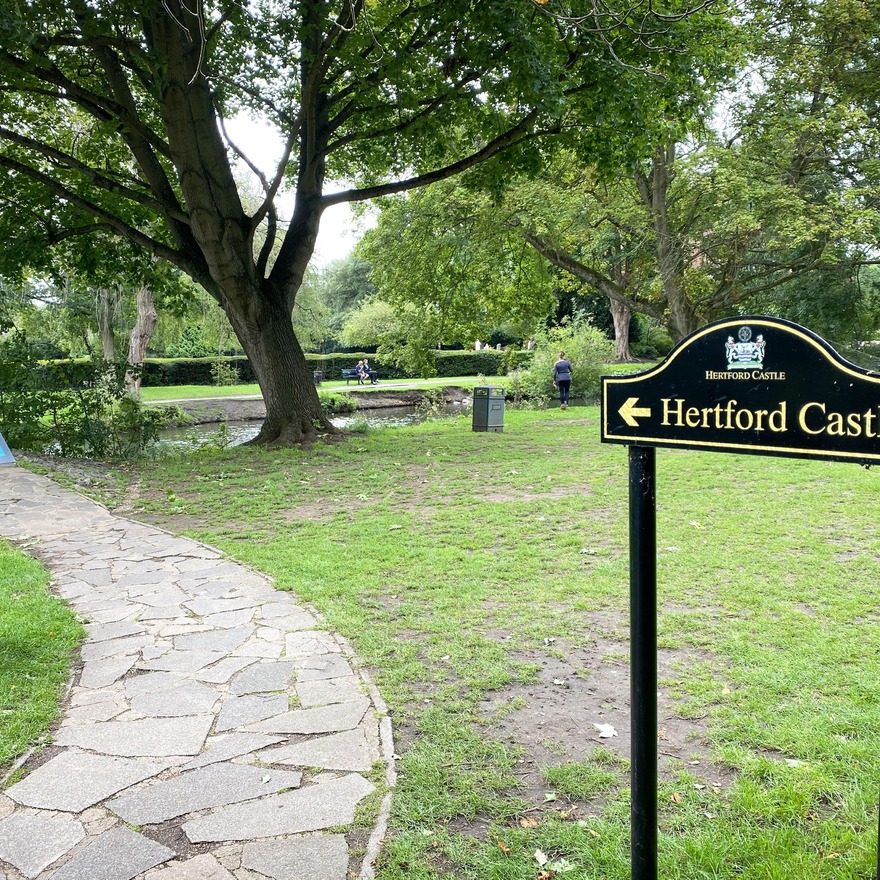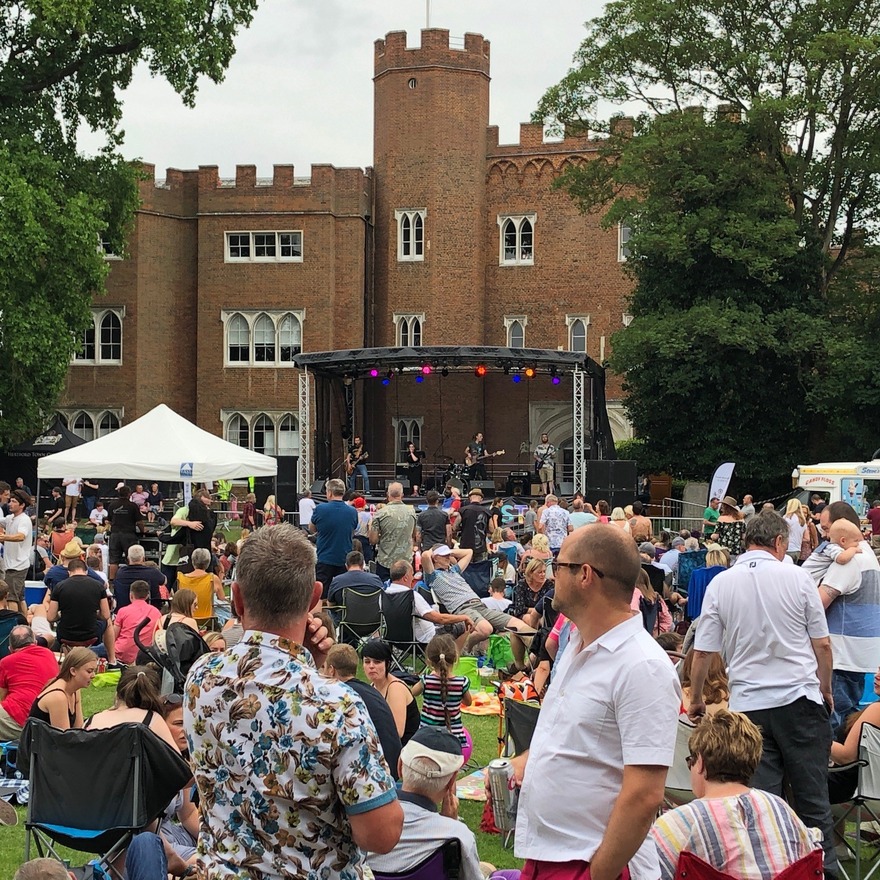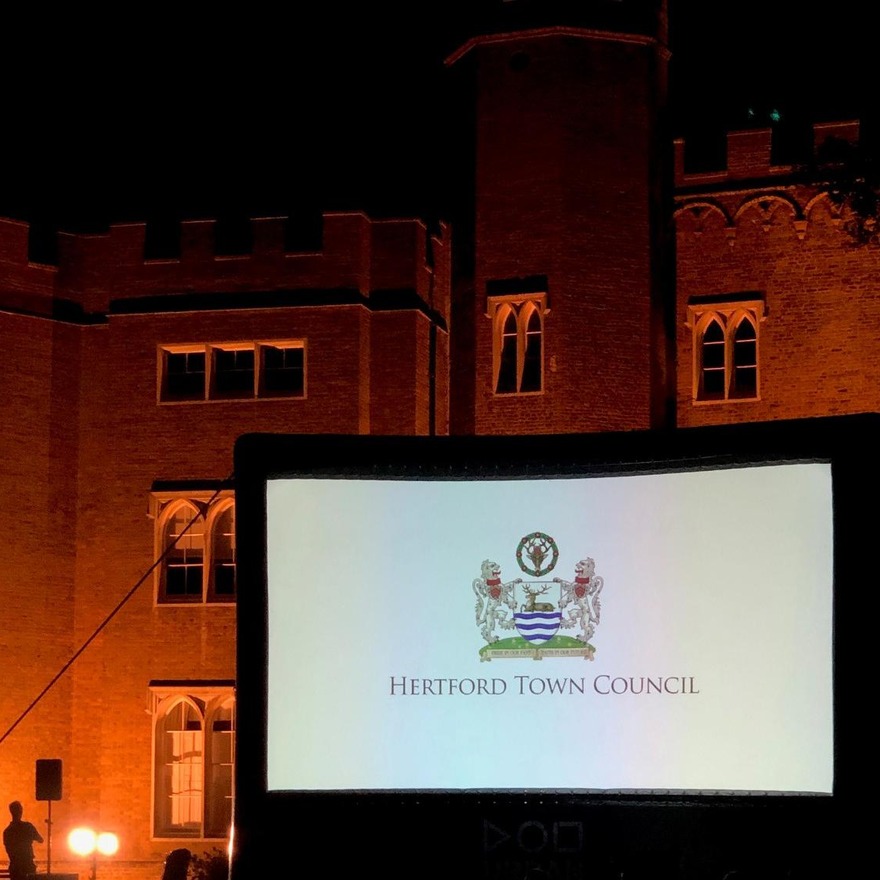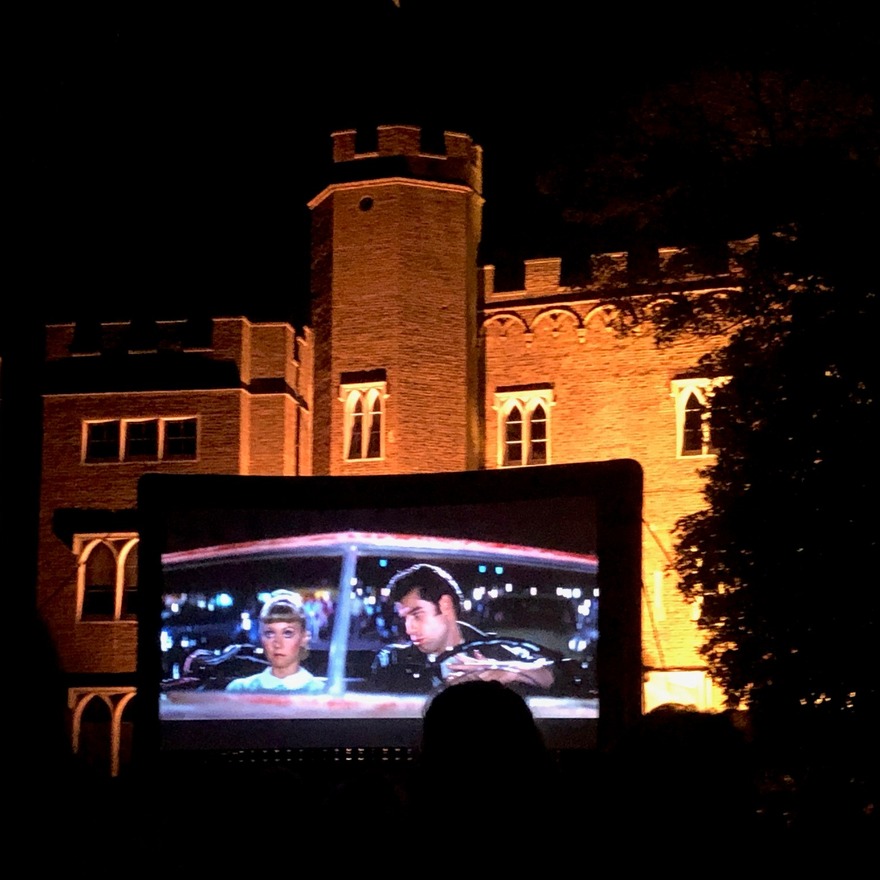History of Hertford Castle

Hertford was a fortified Saxon town built by King Edward the Elder, son of Alfred the Great, in 912. From the Saxon earthworks, designed to resist the Danes, the Castle grew after the Norman Conquest to become a royal fortress and royal residence, under a governor appointed by the King.
Life at the Castle had its exciting moments, in 1216, when it was besieged and taken by Louis, Dauphin of France, whom the barons had called in to help them in their feud with King John, but primarily it was a pleasant country house where the King and court could enjoy fresh air and hunt in Hertingfordbury Park.
Being the King's own property it was often made over to members of the royal family and many a king settled it on his queen. In 1327 Edward III granted the Castle, Town and Honor of Hertford (which included Bayford, Essendon and Hertingfordbury) to his mother, Queen Isabella; in 1360 it became the first home of his fourth son, John of Gaunt.
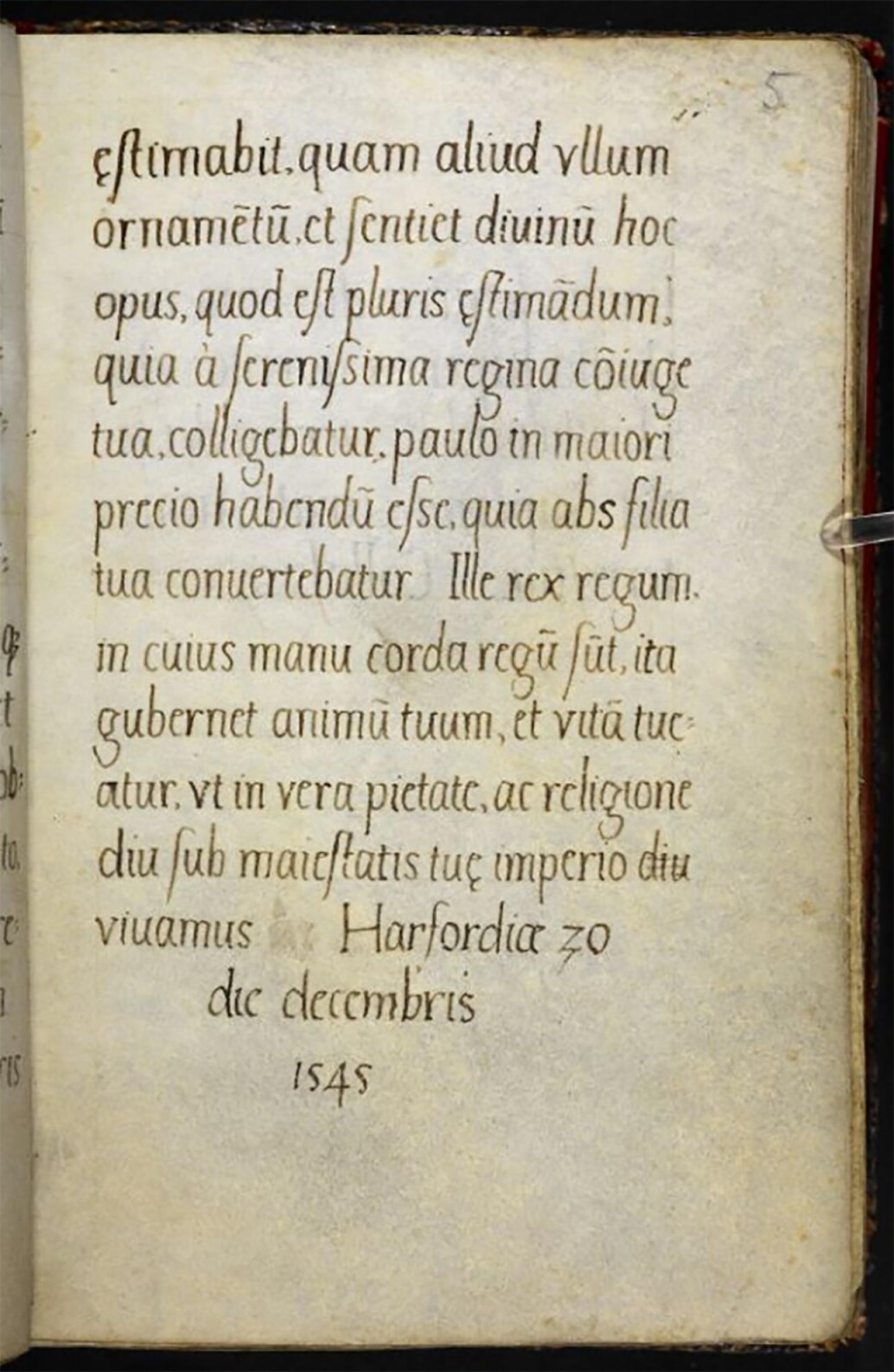
Edward III also used it as a prison for kings captured in his wars and both King John of France and King David II of Scotland, whose wife was Edward's sister, Joan, were kept in luxurious confinement here.
Though Hertford saw little of her father, Henry VIII, Queen Elizabeth I spent much of her childhood here in governess care. In the British Library there is a book of prayers beautifully written by Princess Elizabeth at the age of twelve and dated 'Hertford 1545'. When Queen, she stayed here frequently and visited great houses in the neighbourhood.
During her reign Parliament met at Hertford Castle when driven from London by the plague. This has given the name to Parliament Square, while Queens Road takes its name from the tradition that Elizabeth would climb the hill from the Castle to enjoy the view from a spot afterwards known as Queen's Bench.
Not so King James I, for whom the hunting at Hertford was not good enough and who found that Hertford Heath, Royston and Theobalds Park in Cheshunt gave better sport. He made over Hertford Castle to his son, Prince Charles, who also had little use for it and, when he became King Charles I, bought the centuries of royal possession to an end by granting the Town and Castle of Hertford to William Cecil, 2nd Earl of Salisbury, whose descendants own the Castle to this day.
From this time on the Castle was a private house, owned but not occupied by the Salisbury Cecils and let on lease to many notable tenants. Among them were the Marquis of Downshire, an Irish peer and the Marquis of Salisbury's brother-in-law who, in the 1790s altered and enlarged the house and beautified the grounds.
The Castle next became the first home of the East India College, founded in 1805, until it removed to the new college buildings on Hertford Heath completed in 1809. The Castle continued in use as a junior school until 1819, after which it was let as a private house, leased to such well-known families as Longmore and McMullen. In 1911 came the final change, when Lord Salisbury leased the Castle to Hertford Corporation at a nominal rent The gatehouse was converted to Council offices and the gardens became a public pleasure ground.

The Buildings of Hertford Castle
In the north-east corner of the Castle gardens is a tree-clad mound beside the River Lea. This is the earliest remaining part, the motte of a small Norman motte-and-bailey Castle, from which the rest has grown. In great castles, the motte was crowned by a strong stone keep, but small ones had a wooden tower on top and a timber palisade around the base, and these the motte at Hertford would have had. The bailey was enclosed by a defensive bank and ditch and also by a wooden palisade, which King Henry in 1170 replaced by the present massive curtain wall of flint and stone, seven feet thick.
There are interesting details in this wall. The pointed archway was the ancient postern gate, a sort of side entrance from the town, and led to a bridge across the moat, which was guarded by the adjoining tower. In the south-west corner a patch of brickwork can be seen, all that remains of the great angle tower that here rose above the moat and overlooked the town. When the moat was drained the tower was converted into a house and named Tower House.
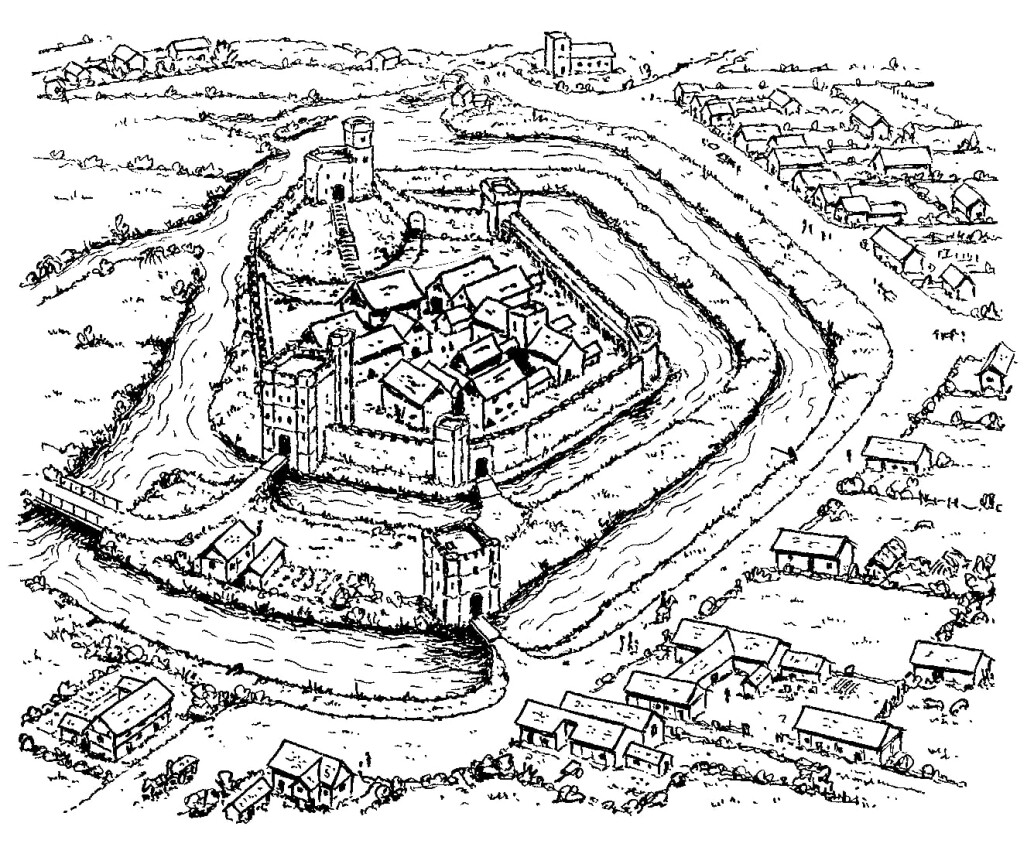
In the 1780s this was a school for boys under John Worsley, a famous scholar who translated the New Testament from the Greek.
The adjoining gateway, cut through the curtain wall, was built about 130 years ago when the Castle was a private house.
The bailey inside the curtain wall is now a smooth green lawn and it is not easy to imagine how it looked 500 years ago, when it was filled with the buildings used by the king and queen and officers of the court. Here were the royal apartments, the chapel, the great hall, kitchens and offices, all timber-framed buildings which have left no trace.
Most of them were taken down during the reign of James I, when Hertford Castle was said to be "ruinous and decayed", except for the gatehouse and the angle tower. Though the tower has gone the gatehouse still survives in fine condition, rebuilt by Edward IV in 1463 and enlarged by the Marquis of Downshire in the reign of George III.
The gatehouse was the Castle's chief defence, protecting the royal lodgings in the inner bailey and guarded by a portcullis and a moat, which ran past the gatehouse to the River Lea.
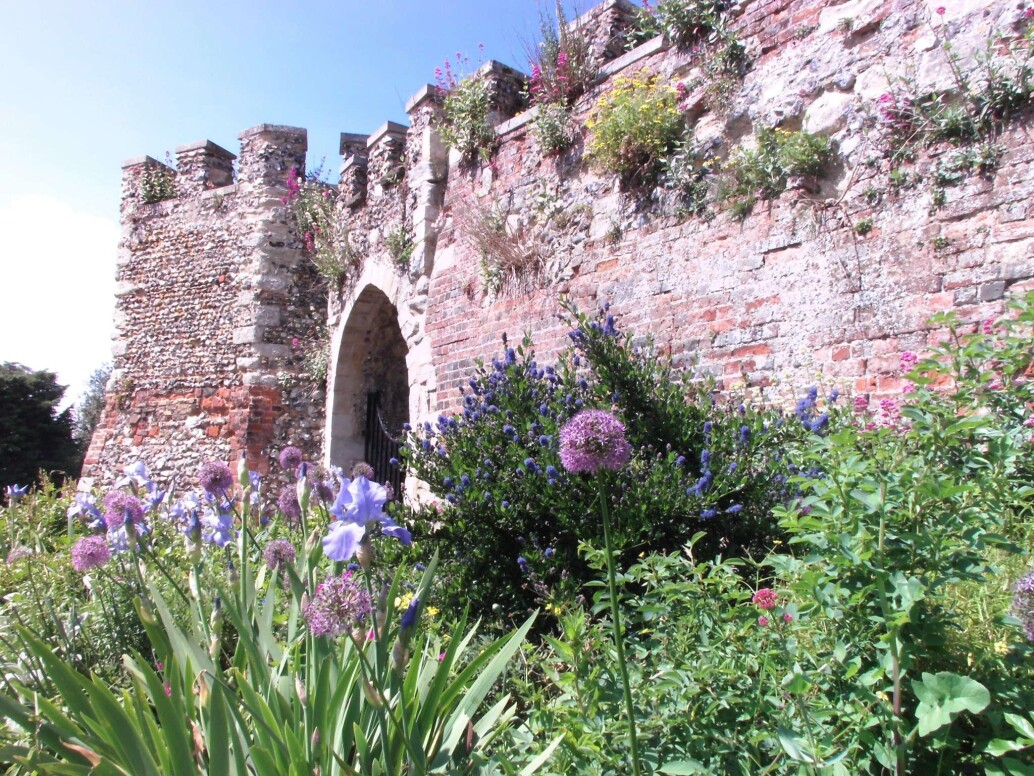
Edward IV's gatehouse has a tower at each corner, and though the archway through it has been blocked, the stones of the arch can still be seen in the wall, with the royal arms set above. Downshire added the white stone porch, altered the windows to a different shape, and remodelled all the rooms in Georgian style; he also added the long south wing in brickwork to match the rest, first demolishing a stretch of the curtain wall.
In spite of these drastic changes, when the gatehouse was restored in 1972 the builders were amazed to find that Edward IV's work had only been hidden, not destroyed, and the notable 15th century stonework and brick-and-timber screens that adorned the rooms have now been restored to sight.
Downshire also built the stables and cottages further west. Note that the north front of the cottages is designed in harmony with the gatehouse front. The wide moat is now dry and almost entirely built upon except for the Moat Garden opened in 1951, and there another of Downshire's improvements may be seen; the ice-pit, built of brick beneath a mound on what was once the outer bank of the moat.
Five Volunteer and Local Militia Colours The Napoleonic War Period
In 1845 the will of Henry Allington of Bayley Hall, Hertford, bequeathed to the Hertford Borough Council five flags of the Napoleonic period which had belonged to Volunteer and Local Militia units in the area which were raised in succession. The Colours are the only known complete set of Colours for Hertfordshire Units at the time of the Napoleonic Wars and are said to be of great historic value.
Where the Colours were housed between 1845 and 1980 has not been established but they could have been hanging in the Committee Room at the Shire Hall for much of that time. They were certainly there in 1909 and in 1980 had to be taken down when Hertfordshire County Council redecorated the building. They were then stored at the Castle rolled up on their poles until funds were raised in 1985-86 for a special display case designed and built by the area Museums service for South Eastern England. The cost of constructing the display case (£941) was met entirely from donations. They are now housed in the Town Council's 'Seed Warehouse'.
The Colours are made of silk and were netted in 1910 (at a cost of £9) to preserve them Both the netting and silk have become extremely dirty and very delicate, and careful treatment is required to clean and restore them.
Detailed information about the treatment of the Colours is available on request. The history of the Colours and of the Units they represent has been pieced together with advice from Mrs D. B. Willcox, the Assistant Director and Keeper, Department of Uniform, National Army Museum, from Lt. Col J Sainsbury, the historian of the Hertfordshire Yeomanry, and from Mr A G Davies, the former Curator (Research) of Hertford Museum.
Hertford Castle and The Black Prince
In the year 1327, Edward III became one of the longest-reigning Kings of England. His reign lasted fifty years and he had four sons, the eldest of whom was Edward, The Black Prince, who won the battles of Crecy and Poitiers. He captured King John of France and his son, and brought them to Hertford Castle in April 1359, where the French King was allowed to live in the style to which he was accustomed.
At Easter in 1359 the French King went to St. Leonard's Church, Bengeo, to hear a mass by the Black Monks of the Holy Trinity. While he was at the Church, his hounds worried and killed a sow belonging to Master Revell of Revells Hall. The King expressed his regret and paid Master Revell ten shillings compensation for the loss of the sow.
The fourth son of Edward III, the "Black Knight", was John of Gaunt, the Earl of Richmond, whom the King bestowed great gifts upon. On attaining the age of majority he married Blanche, his cousin, only daughter of the Duke of Lancaster. On the death of his father-in-law John inherited, through his wife, the wealthiest duchy in England. When he became Duke of Lancaster he incorporated Hertford Castle into his Duchy and spent much time at the Castle. He had nine children by three wives.
He married the second of his wives, Constanza of Castile, a Spanish Princess, at Hertford Castle. His third wife was Katherine Swinford. Her servants were buried in St Nicholas' churchyard, where Poundstretcher store now stands, in Maidenhead Street in the centre of Hertford, according to the records.
The Duchy of Lancaster held Hartham and the Kings Meads as part of its ancient demesne lands, and also the Manor of Hertingfordbury. That great house suffered its destruction 100 years later, in the War of the Roses, when the House of York triumphed over the House of Lancaster. All its lands, including Hertford Castle, were confiscated and the market and tithes which belonged to the House of Lancaster in the Old Cross and northern area of the Town of Hertford ceased to have an independent role in the Town.
As a former manor of the Honor of the Duchy of Lancaster, in 1926 Hertford Corporation claimed, and was granted back its ancient status of an Honor, and was granted its banner by the College of Heralds, a heraldic banner which is still displayed with the Corporation plate, and which carries on it the head of a stag and the arms of the Borough.
A Brief History of Hertford Castle
Hertford Castle has seen many changes over the years and has played an important role in the country’s history. Some of the important dates and events connected with the Castle are listed below.
1066- 1067
The Normans built a Castle to control the river and the town, and to dominate the surrounding area.
1170- 1174
Henry II enlarged and strengthened the Castle as part of the defences of London, alongside such castles as Berkhamsted and Windsor. The existing stone wall was built, as well as the great hall which survived until the 17thcentury.
1215
The Castle’s governor, Robert Fitz Walter, and a rebel army of barons, offered the English throne to the French Prince, Louis the Dauphin.
1216
The French captured the Castle after a 25 day siege.
1217
The French were defeated and the Castle returned to the English Crown.
1304
The Castle became a Royal Palace. For the next three centuries down to the reign of Elizabeth I, it was regularly used by monarchs.
1346-1359
As a royal prison, it held King David II of Scotland and King John of France, both captured in battle. Their rich courts and servants were also here, and John spent £3850 in four months that he was imprisoned here, at a time when a labourer would only have earned about £3 a year!
1360
The Castle was granted to John of Gaunt, the fourth son of Edward III.
1399
John of Gaunt’s son, Henry, Duke of Lancaster, had the Castle taken from him by King Richard II. Later that year Richard was deposed and Henry became King Henry IV, regaining ownership of the Castle.
1463
The present brick gatehouse was built for Edward IV. It is now used as council offices.
1564, 1582, 1592
The Palace buildings houses Parliament, law courts, and the Privy Councils due to plague in London.
1608
By this time, the Palace buildings had been demolished and the gatehouse became a private house.
1627
The Castle was granted to the Earl of Salisbury, whose descendants own it to this day.
1700s
The grounds were used for many things including fattening cattle for the London meat markets. Archaeological remains show that items such as combs, spoons and buttons were also made on the site. Later in the century the gatehouse was substantially extended by the Marquess of Downshire, brother in law of Lord Salisbury.
1800s
The gatehouse had many uses. It was the first home of the East India College (later to become Haileybury College) and also a medical dispensary for the poor, as well as being a private house for various tenants.
1911
The Castle was leased to the Corporation of Hertford as offices and public gardens. The entrance from the Wash was built.

